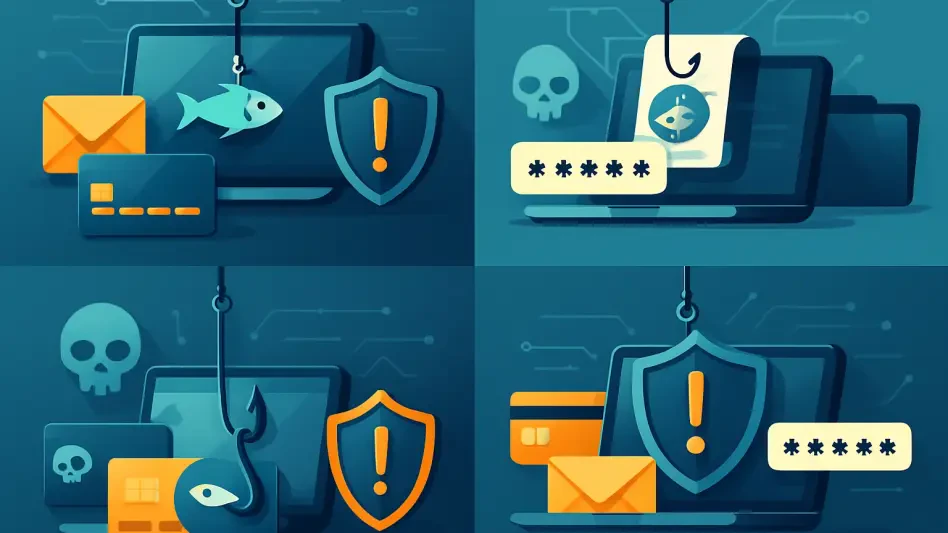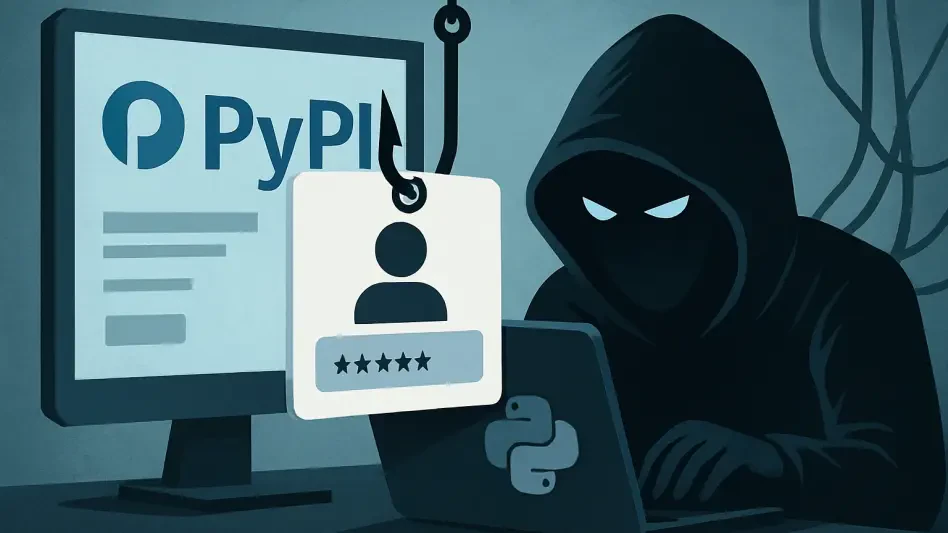Email has long been a critical communication tool for businesses, but it has also become a prime target for cybercriminals. As email-based threats evolve, businesses must stay ahead of the curve to protect their financial well-being. The rise of sophisticated financial fraud schemes exploiting email channels underscores the need for advanced security measures. Recent analysis of cyber insurance claims data has indicated a significant shift in the primary drivers of loss in email-based attacks, moving from traditional phishing and malware tactics to more complex financial fraud schemes. This article delves into the changing landscape of email security threats and the steps businesses must take to safeguard against these increasingly complex attacks.
The Evolving Nature of Email-Based Threats
Traditional email security tools have primarily focused on blocking phishing and malware attempts. However, these tools are becoming increasingly ineffective against the new wave of sophisticated financial fraud attacks. Unlike phishing, which relies on social engineering to trick victims into clicking malicious links or downloading harmful files, financial fraud schemes manipulate recipients into performing actions that result in financial loss without the need for malicious links or attachments. Cybercriminals are refining their tactics to exploit trusted relationships and anticipated transactions, creating a more significant challenge for traditional security measures.
Between 2021 to 2023, cyber insurance claims data revealed a 48% increase in email-related cyber incidents, with financial fraud accounting for 61% of total claims in 2023. This data underscores the growing prevalence of financial fraud and the inadequacy of traditional email security measures in preventing these attacks. The shift highlights the need for businesses to adapt their strategies and invest in more advanced tools capable of identifying and mitigating these sophisticated threats. As the landscape of email-based threats continues to evolve, it is crucial for businesses to stay informed and proactive in their approach to combating these risks.
Financial Fraud Versus Phishing
Phishing attacks have long been a staple of email-based threats, relying on social engineering to deceive victims. These attacks typically involve tricking recipients into clicking on malicious links, downloading harmful files, or revealing sensitive information. While phishing remains a significant threat, the rise of financial fraud schemes presents a new challenge for businesses. Financial fraud attacks are more sophisticated and target recipients directly, often impersonating known vendors or partners during expected transactions. This makes them difficult to detect, as they do not rely on easily identifiable indicators like malicious links or attachments.
Unlike phishing, financial fraud does not rely on immediately obvious red flags. Instead, these attacks exploit the context of regular business transactions, making them appear legitimate and bypassing traditional email security tools designed to detect standard phishing attempts. This sophisticated approach requires a more nuanced and advanced response from businesses to effectively protect against financial fraud. To stay ahead of these threats, companies must understand the fundamental differences between phishing and financial fraud and adjust their email security strategies accordingly.
Challenges in Detecting Financial Fraud
One of the primary challenges in detecting financial fraud is the lack of easily identifiable indicators. These attacks often involve impersonating trusted vendors or partners, making them appear legitimate. Cybercriminals exploit anticipated transactions, further complicating detection efforts. As a result, businesses must adopt more advanced security measures to identify and prevent these sophisticated attacks. Secure email gateways (SEGs) have been effective in blocking phishing attempts but fall short in preventing financial fraud, as they primarily focus on identifying malicious links and attachments, which are not typically present in financial fraud schemes.
To combat these advanced threats, businesses need to invest in Integrated Cloud Email Security (ICES) solutions that leverage artificial intelligence (AI) to analyze email content and detect complex fraud schemes. ICES solutions can identify subtle indicators of fraud that SEGs and traditional tools might miss, providing a more robust defense against sophisticated financial fraud attacks. However, these solutions can be complex and resource-intensive, posing challenges for smaller businesses that may lack the necessary resources to implement and maintain them effectively. The necessity of advanced tools and strategies to address the evolving threat landscape is clear, but businesses must navigate these challenges to stay secure.
Approaches to Email Security
Businesses have several options when it comes to email security, including built-in email solution security functions, SEGs, and ICES solutions. While built-in security functions provide a basic level of protection, they are often insufficient against sophisticated financial fraud attacks. SEGs offer more robust protection against phishing but are less effective in detecting financial fraud due to their focus on malicious links and attachments. This leaves businesses vulnerable to the evolving tactics of cybercriminals who are increasingly targeting email communications for financial gain.
ICES solutions, on the other hand, leverage AI to analyze email content and user behavior, making them more effective against complex financial fraud schemes. These advanced solutions can identify subtle indicators of fraud that traditional tools might miss, offering a higher level of protection. Although ICES solutions are highly effective, their complexity and resource requirements can be daunting for smaller businesses. The need for accessible and user-friendly solutions becomes imperative, as it ensures that businesses of all sizes can protect themselves against sophisticated financial fraud attacks without overwhelming their resources.
The Need for Advanced Security Measures
Given the rise of sophisticated financial fraud attacks, it is clear that traditional email security measures are no longer sufficient. Businesses must invest in advanced security solutions to protect against these evolving threats. ICES solutions, with their AI-driven analysis of email content and user behavior, offer a promising approach to detecting and preventing financial fraud. The enhanced capabilities of ICES solutions are particularly crucial in combating financial fraud that exploits anticipated business transactions and trusted relationships, which can easily fool standard security measures.
However, the complexity and resource requirements of ICES solutions can be a barrier for smaller businesses. The cybersecurity industry must develop more accessible solutions to support these businesses in combating financial fraud. Scalable security solutions that are tailored to the needs and resources of smaller businesses can provide comprehensive protection without being resource-intensive. By investing in the right email security measures, businesses can prevent costly cyber incidents and safeguard their financial well-being, ensuring resilience against the rising tide of sophisticated email-based financial fraud attacks.
Supporting Smaller Businesses
Smaller businesses face unique challenges in adopting advanced email security solutions. The complexity and resource requirements of ICES solutions can be daunting, making it difficult for these businesses to implement and maintain effective security measures. To address this issue, the cybersecurity industry must focus on developing more accessible and user-friendly solutions. By providing flexible options and offering comprehensive training and support, the industry can empower smaller businesses to effectively utilize advanced security tools.
Offering scalable security solutions that can be tailored to the specific needs and resources of smaller businesses is one approach to addressing these challenges. This flexibility ensures that businesses can protect themselves against sophisticated financial fraud attacks without overwhelming their limited resources. Additionally, comprehensive training and ongoing support can help smaller businesses navigate the complexities of advanced email security solutions, ensuring they can leverage these tools to their fullest potential. By supporting smaller businesses in these ways, the cybersecurity industry can help create a more secure environment for all business sizes.
Investing in the Right Email Security Measures
Email has long been an essential communication tool for businesses, but it has also become a prime target for cybercriminals. As email-based threats evolve, businesses must keep pace to protect their financial well-being. Sophisticated financial fraud schemes that exploit email channels highlight the urgent need for advanced security measures. Analysis of recent cyber insurance claims data shows a significant shift in the primary drivers of loss in email-based attacks. Previously dominated by traditional phishing and malware tactics, these losses now mainly stem from complex financial fraud schemes. This shift underscores the importance of adapting security measures to combat new threats. This article explores the changing landscape of email security threats and outlines the steps businesses need to take to guard against these increasingly intricate attacks. By understanding these evolving threats, businesses can enhance their defenses and safeguard their financial interests effectively.







